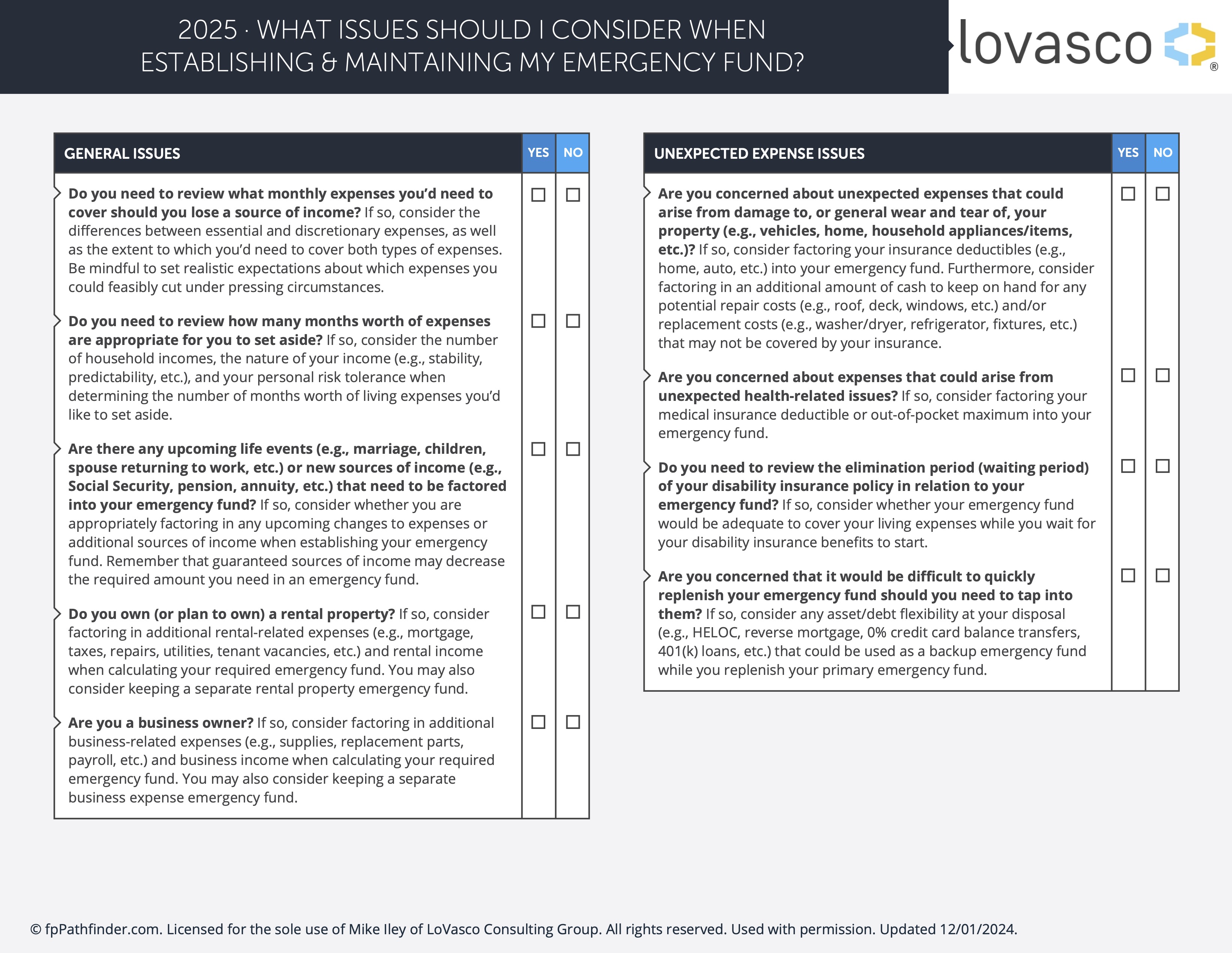Is Your Emergency Fund Built to Withstand Real Life?

When most people think about an “emergency fund,” they typically default to a familiar rule of thumb: stash away three to six months’ worth of expenses in case of emergency. But what exactly counts as “expenses”? And how confident are you that your emergency fund is actually built to reflect your real-life risks and goals?
A proper “emergency fund” should be designed to withstand more than dramatic, worst-case-scenario or “catastrophic” emergencies. It should be built for the real world and be updated practically in real time.
As wealth planners, we often spend time helping clients navigate investments, tax strategies, and retirement planning. But one of the most foundational elements of financial health—the emergency fund—is often overlooked or oversimplified.
That’s why we’re offering this complimentary checklist: “What Issues Should I Consider When Establishing and Maintaining My Emergency Fund?” It goes well beyond simple budgeting advice to walk you through the deeper, often overlooked issues that can make or break your financial readiness in the face of unexpected challenges.

This comprehensive self-assessment will help you:
- Define what “emergency fund” truly means for your unique situation.
- Account for both predictable and unexpected expenses (such as job loss, home repairs, or medical events).
- Evaluate where your emergency funds are held—and whether they’re optimized for accessibility, stability, and inflation protection.
- Align your emergency savings with your broader financial goals.
Whether you’re a business owner, property investor, or just looking to shore up your family’s safety net, this checklist helps you think strategically about one of your most critical financial tools.
Issues considered and explored in this checklist include questions such as:
Do you need to review what monthly expenses you’d need to cover should you lose a source of income?
Do you need to review the elimination period (waiting period) of your disability insurance policy in relation to your emergency fund?
Is the majority of your emergency fund held in accounts or assets outside of your bank (e.g., retirement plans, brokerage accounts, etc.)?
Would any of your savings goals (e.g., retirement contributions, 529 contributions, etc.) be impacted should your current emergency fund be exhausted?
…and many more critical considerations that too often get overlooked.
At LoVasco, we understand that it’s not always pleasant to spend time focusing on worst-case scenarios…but it is always prudent to plan for them.
Download the checklist now and take a few minutes to complete it. Then, let’s talk about how your emergency fund fits into your larger financial plan.

Is Your Retirement Plan Consultant Actually Doing Their Job?
Take the Self-Assessment to Find Out.
You're responsible for your company’s retirement plan. But with shifting regulations, mounting fiduciary risks, and growing employee expectations, how do you know if you have the right fiduciary oversight and financial wellness process in place?
It takes just 3 minutes
It’s completely free
Receive customized results instantly
Not sure where to start?
15 Questions to Score Your Organization's Benefit Program
See what you are missing.
Confirm where you shine.
Track progress over time.

Not sure where to start?
20 Questions to Score Your Organization's Employee Communications Strategy
See what you are missing.
Confirm where you shine.
Track progress over time.

Subscribe to Our Insights Blog
Receive the latest articles from LoVasco's team of experienced experts on employee benefits and retirement plan best practices.






